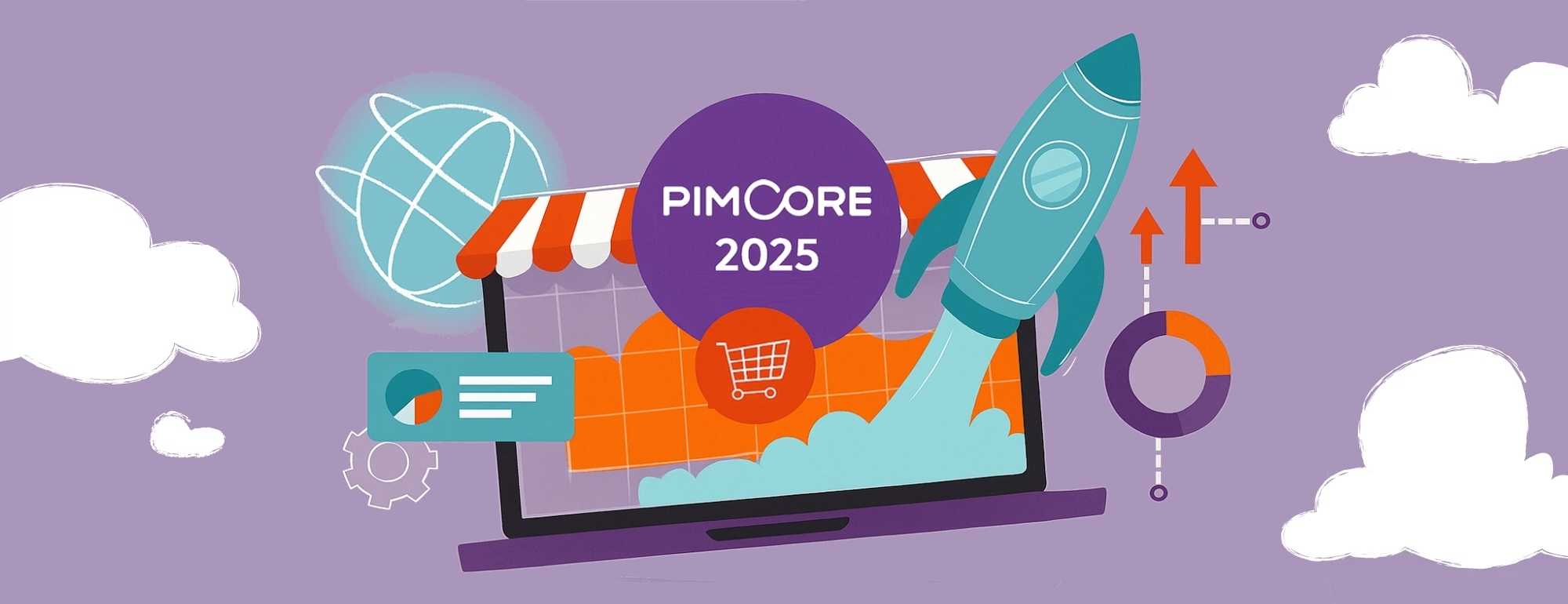An Omnichannel Strategy for the Home Appliances and Consumer Electronics Distribution Sector
The distribution of home appliances and consumer electronics is an extremely competitive market. For one thing, Polish customers are among the most price-sensitive customers in the world. For another, their expectations regarding the product offering, service and complementary services are growing. How to win customer loyalty when competing on price alone doesn’t cut it? How to deliver the best possible customer experience? Cue omnichannel sales.
Why Omnichannel Is Important for Customers of Home Appliances and Consumer Electronics?
Consumer electronics customers expect good advice and in-person interaction, but they also want to be able to conveniently browse products online and pick them up at a physical store or, for larger-size products, have them delivered and installed at home.
Customers also expect fast deliveries and an easy and convenient returns policy. All this involves streamlining the logistics processes. Companies that have successfully embraced omnichannel gradually improve their processes of warehousing, delivery and order processing.
In the home appliances and consumer electronics distribution sector, it is crucial to deliver the best possible customer experience not only at the time of purchase but also at the very end of the process, e.g. when installing or connecting appliances.
The omnichannel model helps build consistent customer experiences thanks to the transparency of the purchasing process and after-sales service.
Challenges of the Omnichannel Model
Launching and further developing an omnichannel strategy may pose a challenge for companies that previously operated only in the e-commerce field or in the traditional retail space.
Let’s take a look at the challenges that are instrumental to effectively implementing business goals and achieving synergy in the sales process.
Implementing an omnichannel strategy is a complex and long-term process. But success is still possible. What are the chief challenges of the omnichannel model? And how to overcome them?
Organizational Culture and Training
It is often the case that to implement an omnichannel strategy, you need to change the company’s organizational culture.
Having no overarching goal for omnichannel and internal competition between channels result in the dispersion of efforts, weakening the effects of activities undertaken within different sales channels. These factors also make it difficult to implement a coherent strategy, confusing customers and undermining operational efficiency.
Lack of proper employee training may be a significant obstacle to the effective implementation of an omnichannel strategy. It is essential that the team are properly trained and able to serve customers across channels and efficiently use the tools and technology needed to provide services in these channels. This requires employees to keep on improving their competences relating to both products and customer service, which is a key element of the effective implementation of an omnichannel strategy.
Successful companies recognize the importance of investing in employee training at different levels of the organization. Training ensures the necessary levels of knowledge and commitment among employees, which is key to successfully implementing an omnichannel strategy. Monitoring the metrics of communication between departments and the ability of employees to handle different channels also provides information on changes in the company’s organizational culture.
Integrated Technology and Reliable Data
To effectively implement omnichannel, one needs to integrate the various sales channels, such as brick and mortar, e-commerce, mobile, etc. The various systems, tools, and platforms must be connected in such a way as to enable seamless communication between them. This will enable using a common data source and coordinated customer service at various levels to create a consistent customer experience across all channels.
It is also important to effectively manage customer data to analyze customers’ behavior and preferences. This allows you to personalize your offering and provide customers with content and products that meet their needs.
Logistics Processes
To deliver home appliances and consumer electronics, you need effective logistics. If used effectively, omnichannel enables companies to gradually improve their processes of warehousing, delivery and order processing. This in turn increases customer satisfaction and boosts your competitive edge.
Integrating these processes can be a challenge, especially for companies that used to mostly rely on one channel.
The company’s logistics infrastructure should support a variety of delivery, pickup and return options. Offering home delivery and pickup at a store or pickup point makes shopping more convenient, attracts new customers and increases customer loyalty.
Centralizing warehouses or modern warehouse management systems shorten lead times, streamlining operational processes and leading to better business results.
It is also important to analyze data on goods movement and customer preferences, which is crucial to ensuring the right levels of product availability and choosing warehouse locations.
Continuous optimization of logistics processes translates to more effective customer service and reduces operating costs and boosts competitiveness.

How to Measure the Effectiveness of Omnichannel?
An omnichannel strategy is successful when a company achieves its business goals while delivering a consistent, satisfying customer experience across all channels.
Metrics and methods that help measure the success of an omnichannel strategy include:
- Monitoring sales growth at company level and at the levels of different channels. The resulting data will show whether the omnichannel strategy produces the expected financial results.
- Checking whether the company’s market share has increased relative to its competitors after implementing an omnichannel strategy.
- The average value of a customer’s order or cart can serve as an indicator of whether customers are purchasing more products or services through different channels.
- Examining repeat purchase rates, customer retention and purchase frequency can reveal whether customers’ brand loyalty increases after implementing an omnichannel strategy.
- Observing changes in metrics related to returns and complaints can show whether the quality of products and services is improving and which channels are more effective in minimizing returns and complaints.
- Analyzing the results of online and offline marketing campaigns in the context of sales and customer engagement will show how well the omnichannel strategy supports your marketing efforts and will reveal the extent to which it allows for synergies between channels.
Notably, various metrics can be used to measure the success of an omnichannel strategy, depending on the company’s goals and profile. It is crucial to monitor these metrics regularly in order to adjust your strategy to achieve the best results.
Of course, the success of an omnichannel strategy is reflected not only in numbers, but also in the consistency of organizational culture and the company’s ability to deliver satisfying customer experiences. Omnichannel is effective if a company attains its business goals, delivers a positive customer experience and has an integrated, coordinated culture.
Tips for Successful Omnichannel Implementation
Each company can achieve success in a different way, adapting the omnichannel strategy to its profile and goals. The key to success is flexibility, the ability to respond to changes and constant striving to improve the customer experience across channels.
In addition to dealing with challenges related to organizational culture and technological issues, including logistics, you also need to focus on several other factors.
Define Your Goals
Before implementing omnichannel, define the primary goal you want to achieve. Do you want to boost sales, improve customer service or increase customer loyalty? A clearly defined goal will help you focus your efforts and avoid distraction, which could undermine the results of your efforts.
Remember that internal competition between channels makes it difficult to effectively implement your strategy. You need to create mechanisms allowing for effective alignment of the different departments. This is one of the main factors determining the success of omnichannel implementation because understanding the organization’s goals can help reduce internal competition and better coordinate efforts.
Understand Customer Needs
You need to understand your customers – their preferences, purchasing habits and expectations regarding the various stages of the sales process. Customers should feel that your service is consistent and of high quality regardless of the channel they choose. Customer analysis will enable you to better adapt your omnichannel strategy to the real needs of your customers.
Proceed Stage by Stage and Test Solutions
When launching an omnichannel strategy, I recommend starting with a pilot in selected areas or stores. Through this, you can gain valuable experience and see what works best. However, for pilots and tests to be successful, you require openness and support from the organization. You must develop an organizational culture that supports innovation, user testing and using collected data in making final decisions.
Summary
If you want to remain competitive, you must integrate different sales channels, adapt your strategy to diverse customer preferences and effectively manage data and logistics. You must integrate different sales channels to enable customers to make purchases in ways that best suit their preferences, while adjusting your strategy to their diverse tastes and needs, which requires flexibility and responsiveness to market changes.
The key to success is the ability to deliver a consistent and satisfying experience on all fronts, regardless of where and how your customers shop. You can achieve these goals through omnichannel. The omnichannel approach integrates all available sales and communication channels, enabling customers to move freely between them and ensuring consistent service and product delivery. This enables you to effectively respond to changing market needs and to provide your customers with comprehensive and satisfying experiences.







